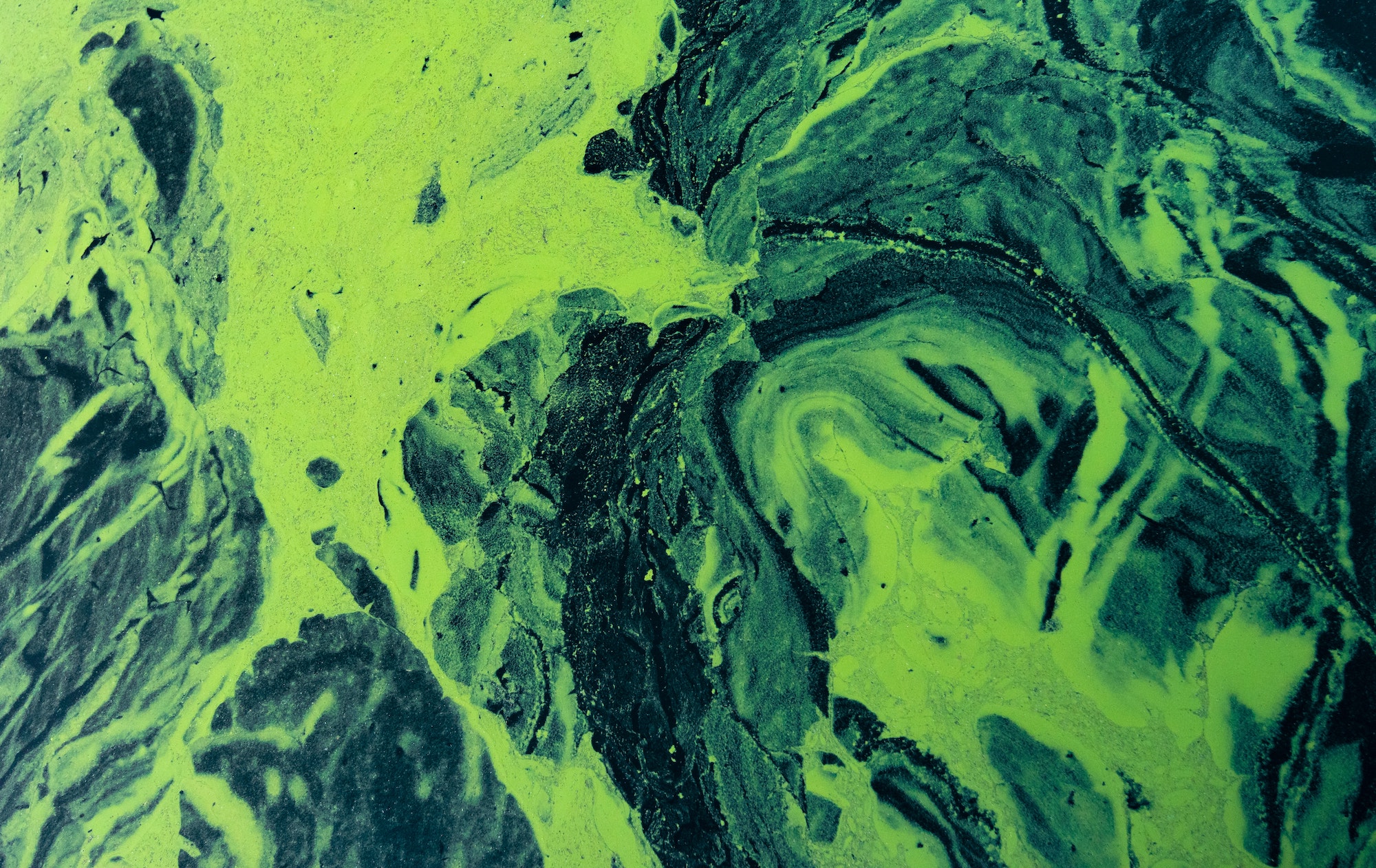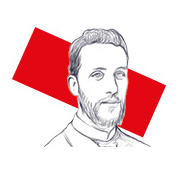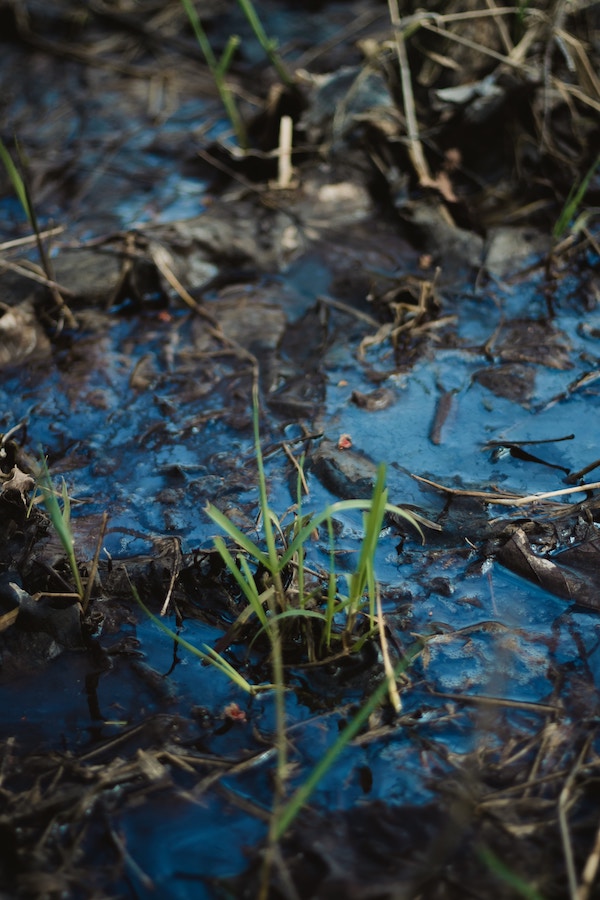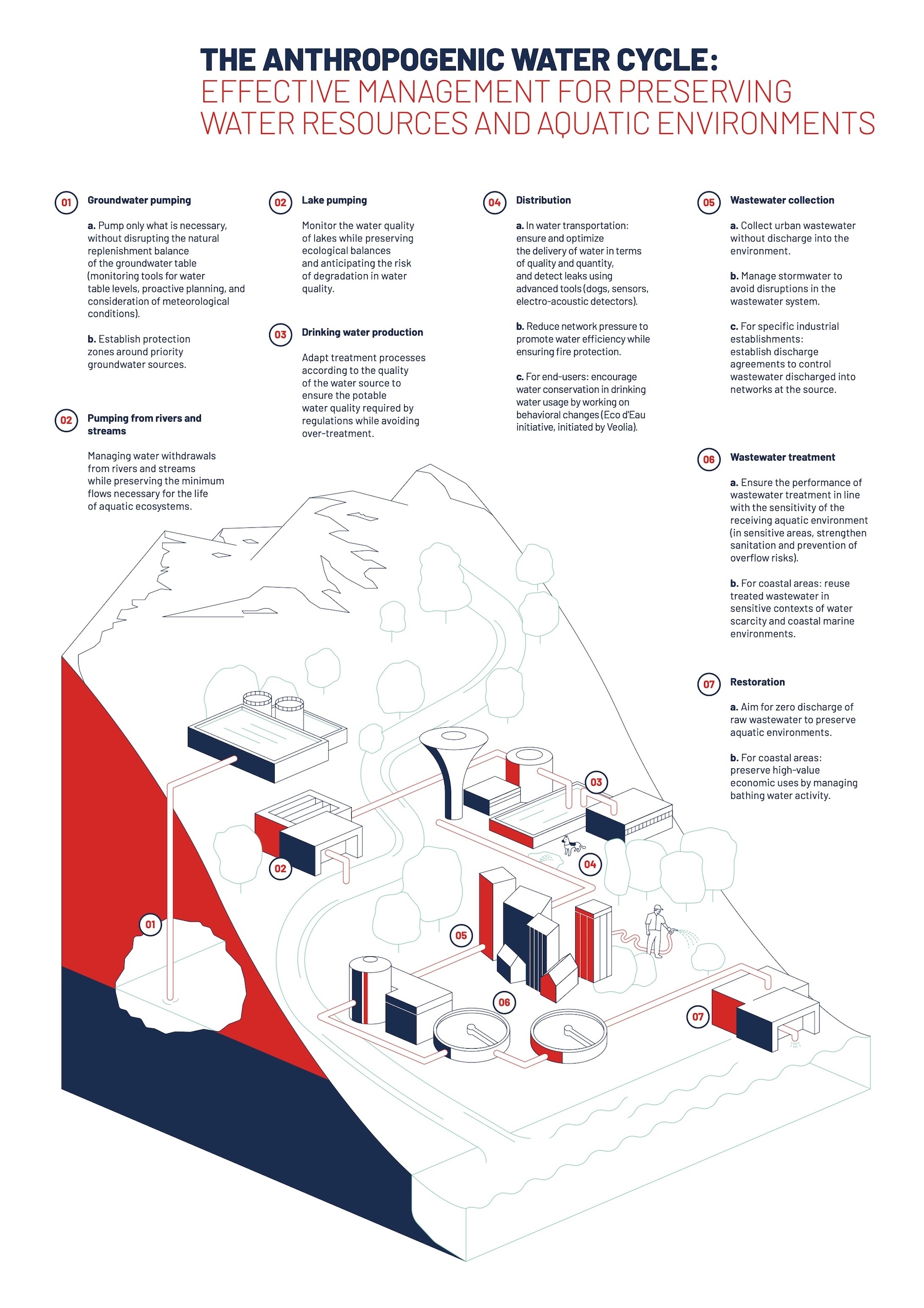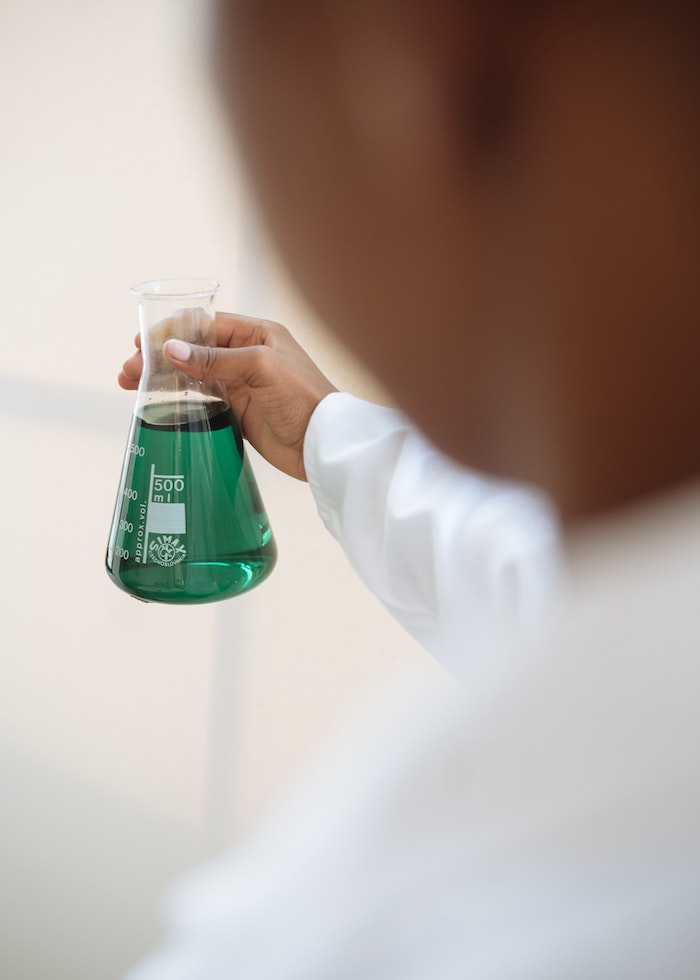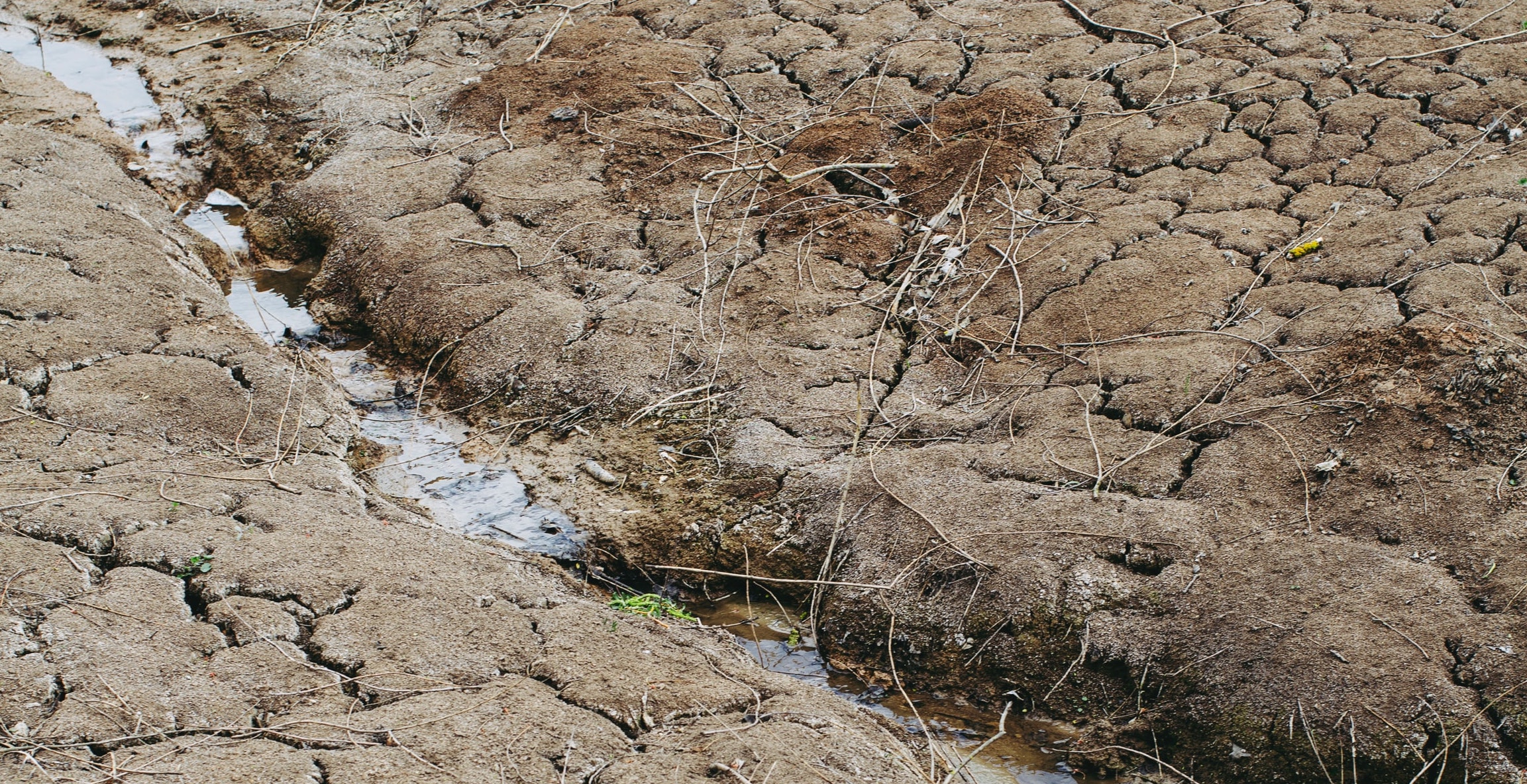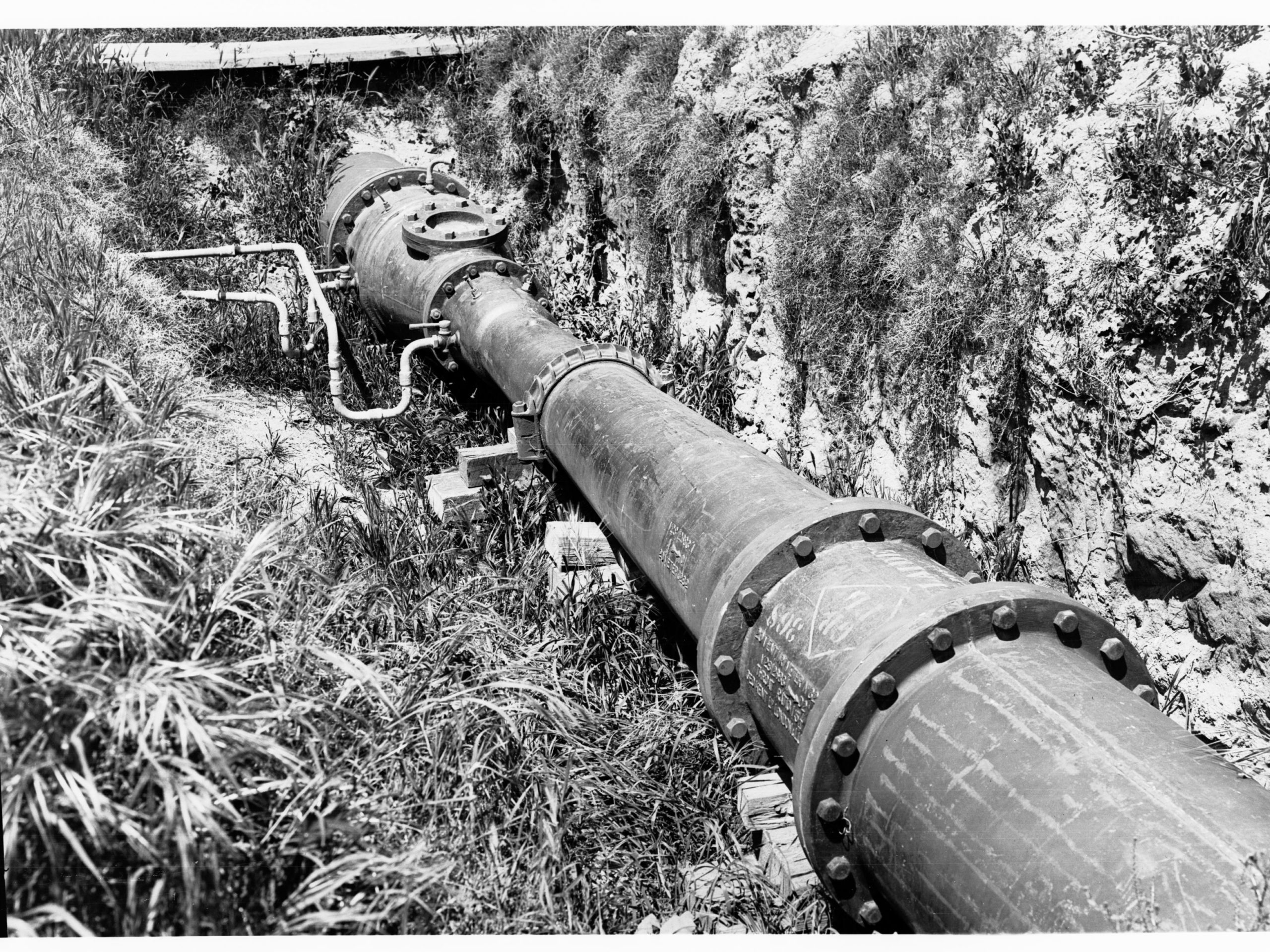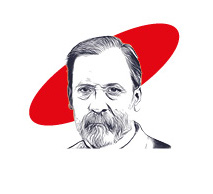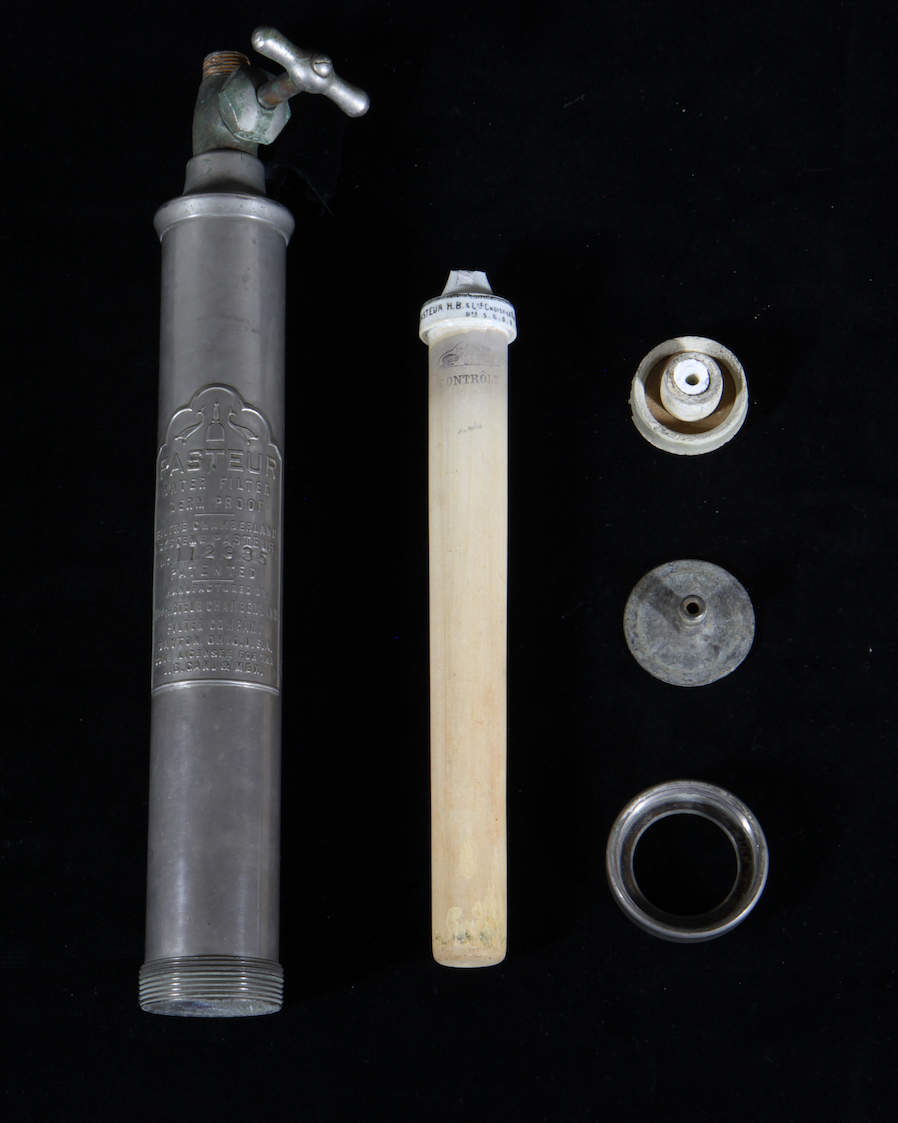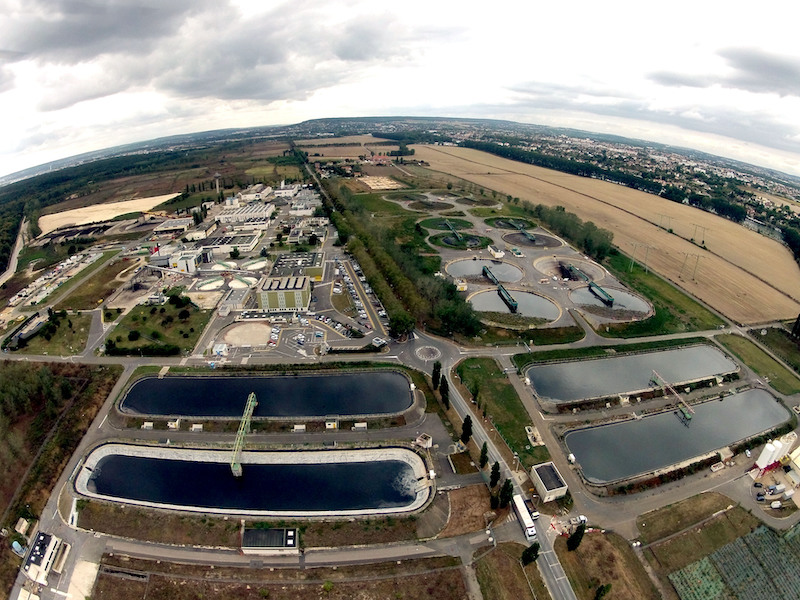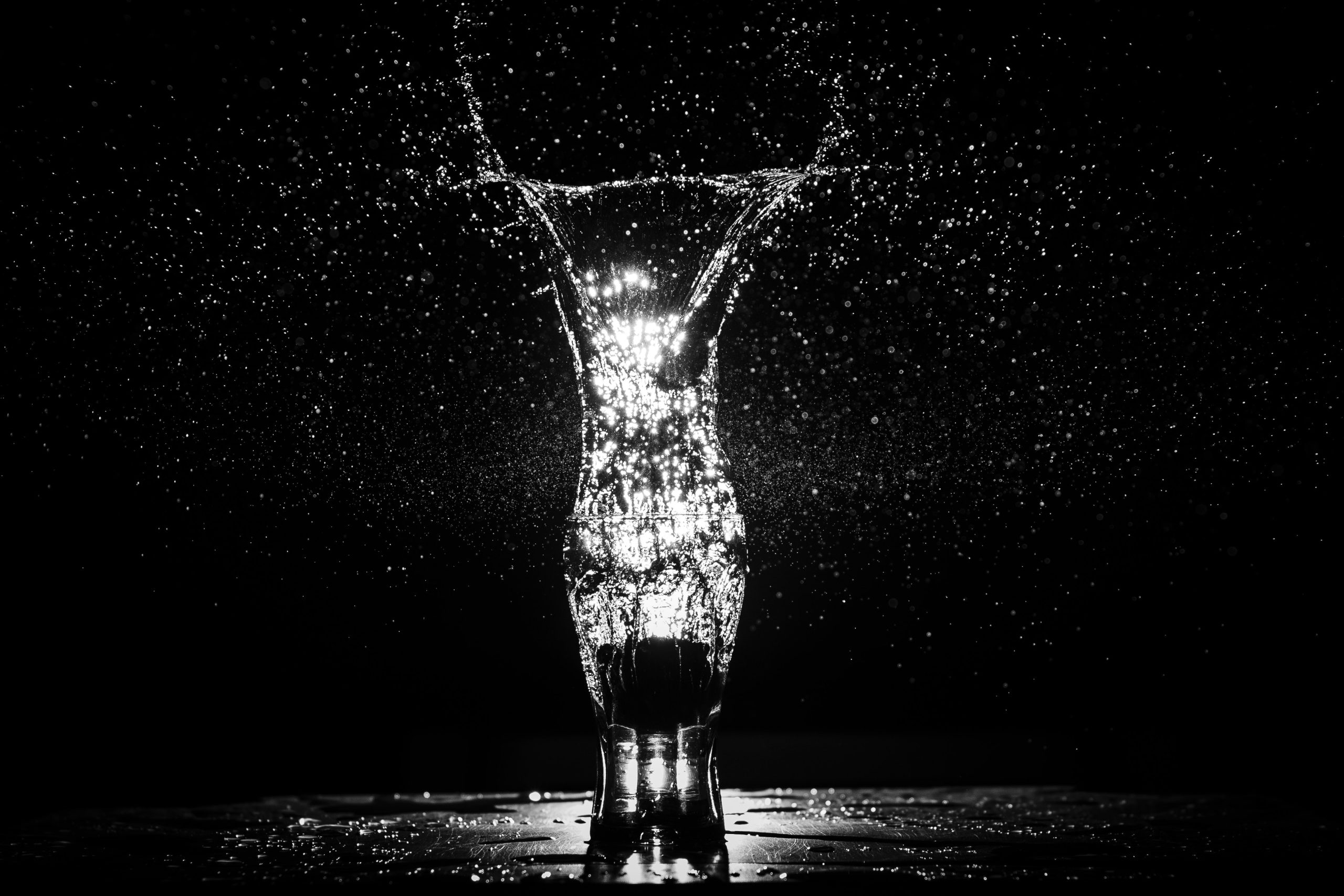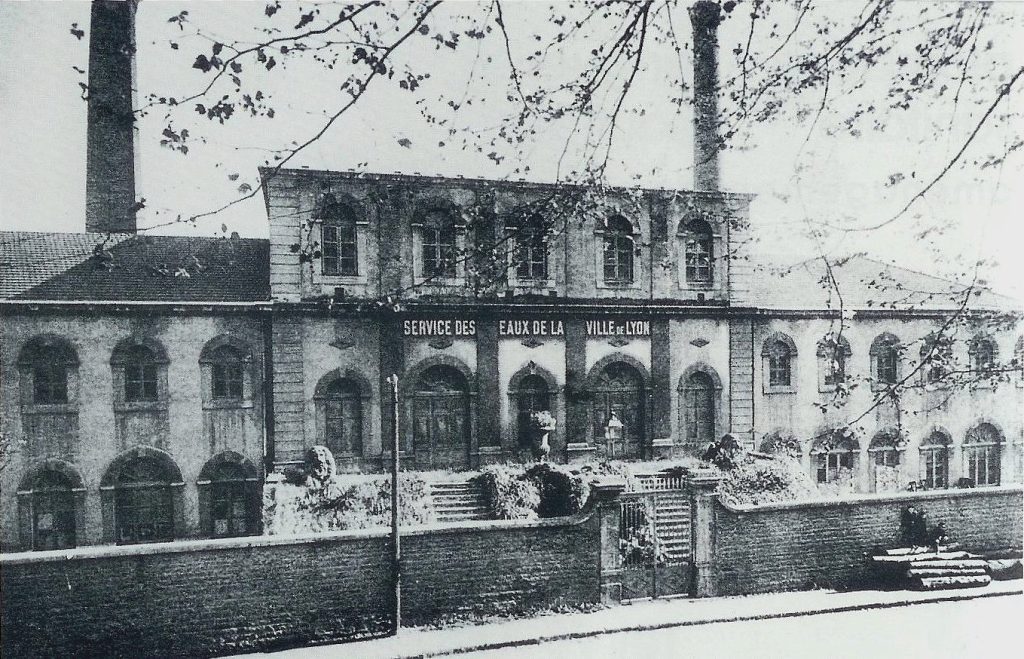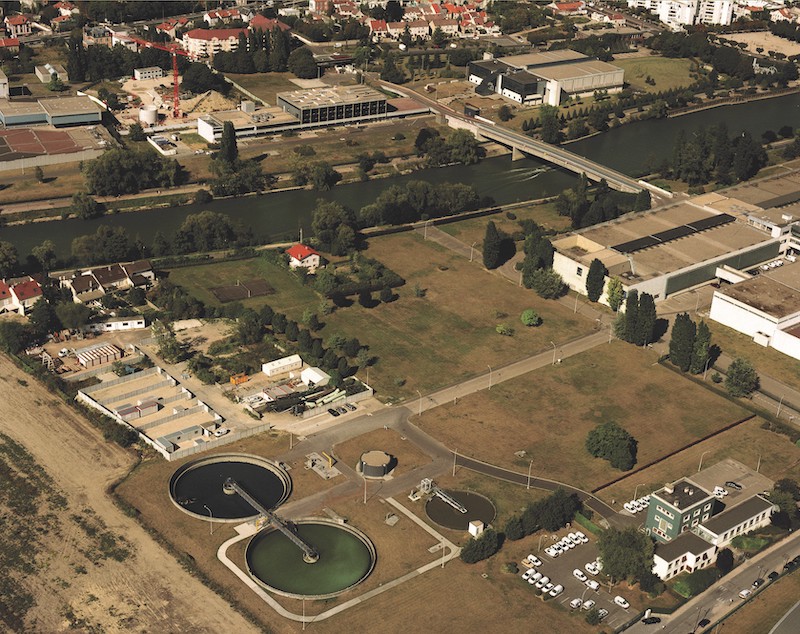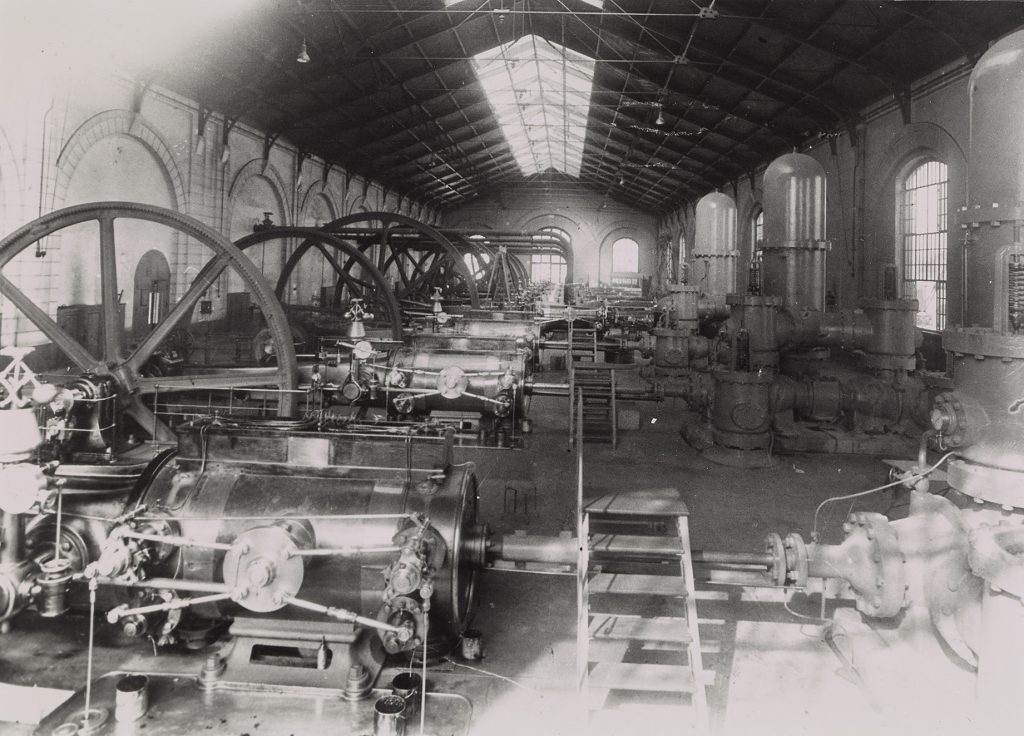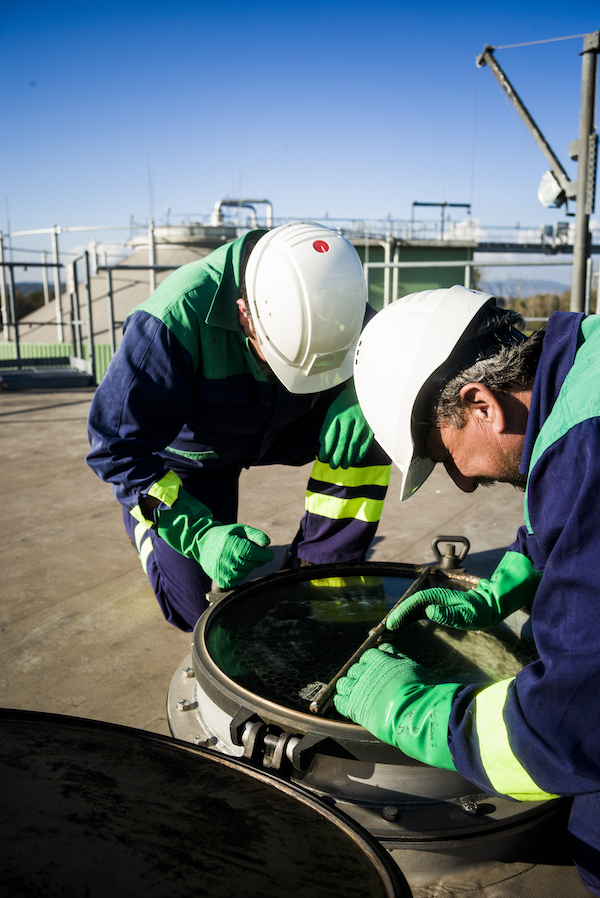STORY #5
Le 21 sept. 2023
Consuming the Resource: Escalating Scarcity
At a time when unlimited water consumption is being called into question, both for countries that currently benefit from it and those who aspire to it, it is important to understand how this ideal came about, considering that for centuries water consumption was always a trade-off between different uses.
In fact, the needs of individuals have always come after those of navigation, energy production, industry, and the ostentation of the monarchy, while irrigation of crops was kept to a minimum and collectively regulated through common rights. Water supply varied depending on the seasons, with rivers and groundwater drying up in the summer and supply being disrupted by freezing temperatures in winter. Technological limitations restricted the use of water for the majority, as the art of water supply engineering made little progress from the Middle Ages to the Age of Enlightenment. The desire to consume water for personal use did not exist prior to a new understanding of hygiene, privacy, and the private sphere.
Modern aquavore societies have broken free from this triple dependence on nature, technology, and a model of civilization. The challenge now is to rethink these connections: we are rediscovering our dependence on the seasons, which has never ceased in much of the world, while technology based on fossil fuels allows for increased pumping and desalination without considering ecosystems, thereby hindering the necessary shift towards a happy sobriety centered on reconnecting with the land on which we live and preserving its resources.
Grégory Quenet
The modern conquest of water has led to profound changes in our way of life. Associated with sacred ritual for many centuries in Europe, from baptism to passage into the afterlife, water was gradually domesticated through science and technology. In the twentieth century, water became a prerequisite for modern comfort at home. The famous sign “Water and gas on every floor” proclaimed the availability of these utilities in upscale buildings, symbolizing a certain level of affluence in the early days when the General Water Company equipped major cities with their networks, before abundance became widespread. This was a time when modernity was mobilized for the water supply. Water brought the benefits of hygiene (washing, drinking, laundering, and dishwashing) and leisure at home (gardening and even swimming in one's pool).
Then, quickly, came a period of forgetfulness. This comfort was achieved by freeing women and men from the burden of water: by burying networks, protecting water sources from human contact, and hiding wastewater treatment plants. Water thus became invisible, and our sensitive relationship with it was anesthetized. Historian Jean-Pierre Goubert even speaks of “amnesia,”1 noting how our societies have forgotten “the hyphen between the body and nature that water represents.” But what is repressed often returns, and the need to reconnect with water is stronger than ever, leading to urban renaturation, pedestrian and cycling developments along watercourses, the opening of the Seine for swimming in 2025.
Today, the scarcity of freshwater resources worldwide, even in historically temperate countries, has led to a global ecological awareness. The general public is discovering concepts such as water stress and the reuse of wastewater, which renew our relationship with water. Some want to monitor their consumption in real time to save money, while others want to collect rainwater to become more self-sufficient, but everyone fears the absence of this vital resource. It follows that the history of water and its consumption has been characterized by flows (the generalization of access to water) and ebbs (its invisibility). But it has also been written through the sedimentation of successive layers. Thus, the early stages of water domestication gave birth to water meters, which are now valuable allies in measuring and ecologically preserving the resource.
Water Domesticated: Measuring the Resource for Better Control
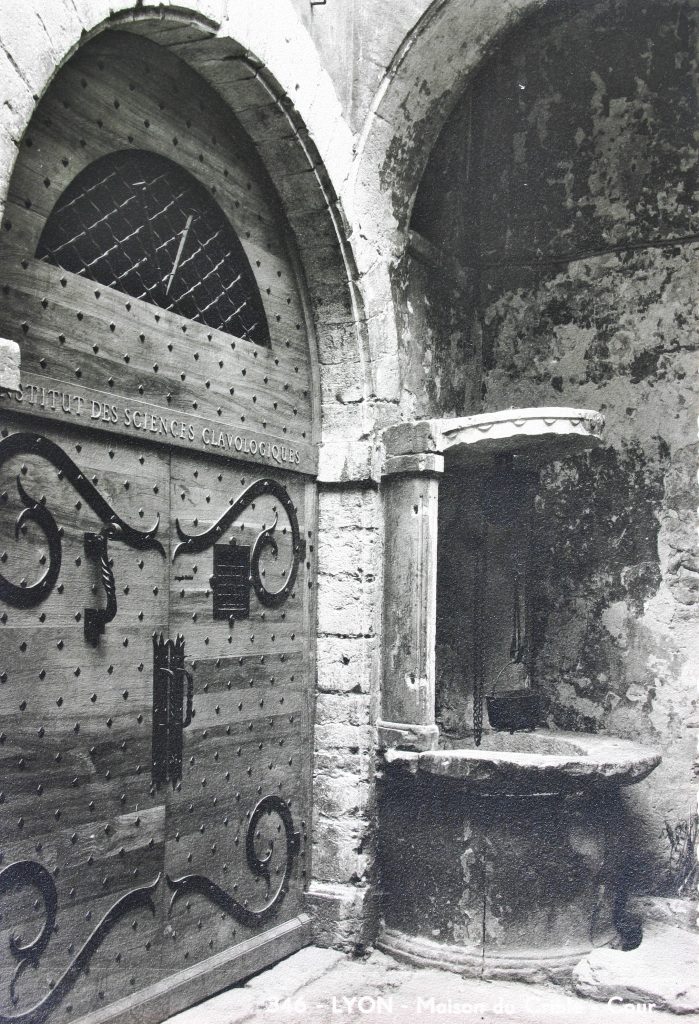
© La Pompe de Cornouailles Association
The saga of water in France started later than in England. Paradoxically, this allowed for the deployment of a crucial innovation: the water meter. In addition to resolving equity issues posed by other types of subscriptions, the water meter enabled control over consumption, which was skyrocketing at a time when the network was still too small, especially during periods of drought. Although poorly documented except in a few cities, the history of water service subscriptions has been well studied by researchers such as Konstantinos Chatzis, Bernard Barraqué, and Frédéric Graber, who trace the various issues surrounding subscriptions based on gauges, free taps, and water meters.
Originally, the gauge allowed heavy consumers to have a constant but low flow of water (hence the term “running water”) according to a predetermined volume, while the free tap corresponded to the usage of small consumers. The price of the subscription to the free tap was evaluated based on the most accurate estimate of daily consumption by individuals, regardless of actual consumption. In Angers in 1855, for example, it was estimated that each person in a household would use 20 liters of water, while 75 liters were allocated per horse, 50 liters per car, and 1.5 liters per square meter of irrigable garden. This gives an idea of the urban uses of that time, which were more focused on outdoor spaces (stables, courtyards, gardens, and streets) rather than domestic use.
Jules Dupuit, an engineer from the Ponts et Chaussées, advocated for the “free tap,” which he considered to be the payment solution closest to users’ needs. His Treatise on Water Distribution, published in 1854, prompted many cities, including Paris, to adopt this subscription method in numerous households. However, criticisms quickly arose against this system, with detractors fearing abuses, as the “free tap” sometimes led to donations or resale between neighbors, which was prohibited. In reality, abuses related to this subscription were quite rare, especially since safeguards were put in place in certain municipalities, such as limiting the number of taps, push-button taps (similar to those still found in some public places, now replaced by motion detectors), tap restrictions, absence of sinks (to prevent users from leaving taps open for too long), overestimation of needs in subscriptions, etc.
Water meters had existed for a long time when the Compagnie Générale des Eaux, the predecessor of Veolia, decided to install them for the first time in Paris and its suburbs starting in 1876, a time when it managed water distribution for the capital. As early as 1815, a meter was invented by the Siemens brothers and experimented with in England and Germany. However, it was the Kennedy meter from the Kilmarnock company in Scotland, improved by engineer Samain in the 1880s, that would be widely used in France. The early meters were unreliable and did not immediately gain unanimous acceptance. They had to be tested and experimented with in a laboratory created for this purpose by the city of Paris in 1883—a predecessor to the Laboratory of Water Meter Testing (LECE), established by the Compagnie Générale des Eaux in Vanœuvre-lès-Nancy in 1976. Today, Veolia tests approximately five thousand meters per year, both new and used, as well as remote reading equipment and leak detectors since 2010. As is often the case, it was an exceptional event that crystallized the debates around the use, or non-use, of the meter and the need to quantify consumption. In July 1881, a severe heatwave led Parisians to leave their taps running almost continuously, causing a water shortage in the city. In this context, the gradual implementation of meters became the most relevant solution to prevent abuses and to equalize users faced with perceived unfair differences in subscription fees. This was particularly evident in the case of Cointreau, a liquor manufacturer in Angers, which was required to have a meter but complained to the mayor that not everyone was subject to the same requirement.
While the meter soon had the virtue of making French citizens more equal in terms of their water bills, subscribers to the meter paid a fixed portion, regardless of their consumption, as well as a variable portion when they exceeded the volume for which they had subscribed. Out of fear of exceeding this volume and in order to offset the high cost of the equipment, which ranged from one hundred to three hundred francs depending on the meter model, subscribers initially reduced their water consumption. This ambivalence toward the meter, which became widespread in France at the same time as the creation of the water distribution network, occurred in a situation where access to the resource remained a significant challenge requiring massive infrastructure that sometimes involved difficult expropriations. It was therefore advantageous for all stakeholders to measure the quantity consumed and to initially moderate its use. The construction of numerous collection points and efficient infrastructure freed consumers and finally met the sanitary requirements of hygienists. In contrast, in England, the early creation of the network delayed the arrival of the meter: in a context of abundant water, authorities deemed it more useful to include the water bill in taxes rather than charging by the volume consumed. Even today, some households in Anglo-Saxon countries pay for drinking water through their taxes, at a rate linked to the rental value of their homes.
Becoming mandatory in 1934 by prefectural decree, metered subscriptions have had a lasting impact on water consumption habits in France. Long before ecological concerns emerged, they encouraged subscribers to ration their water consumption early on and prompted distributors to crack down on waste by identifying and repairing leaks. In urban areas, in particular, collective meters foster a necessary trust among the residents of a building, property owners, and the operator who calculates the billed water volumes—all partners in the hunt for leaks. This collective or “approximately accurate” metering promotes a form of solidarity that encourages virtuous behavior when it is accepted by all. However, ecological demands and increasing attention to water conservation are now challenging this solidarity: should meters become increasingly individualized, and should the benefits of water savings be more directly attributed to encourage everyone to contribute to the collective challenge?
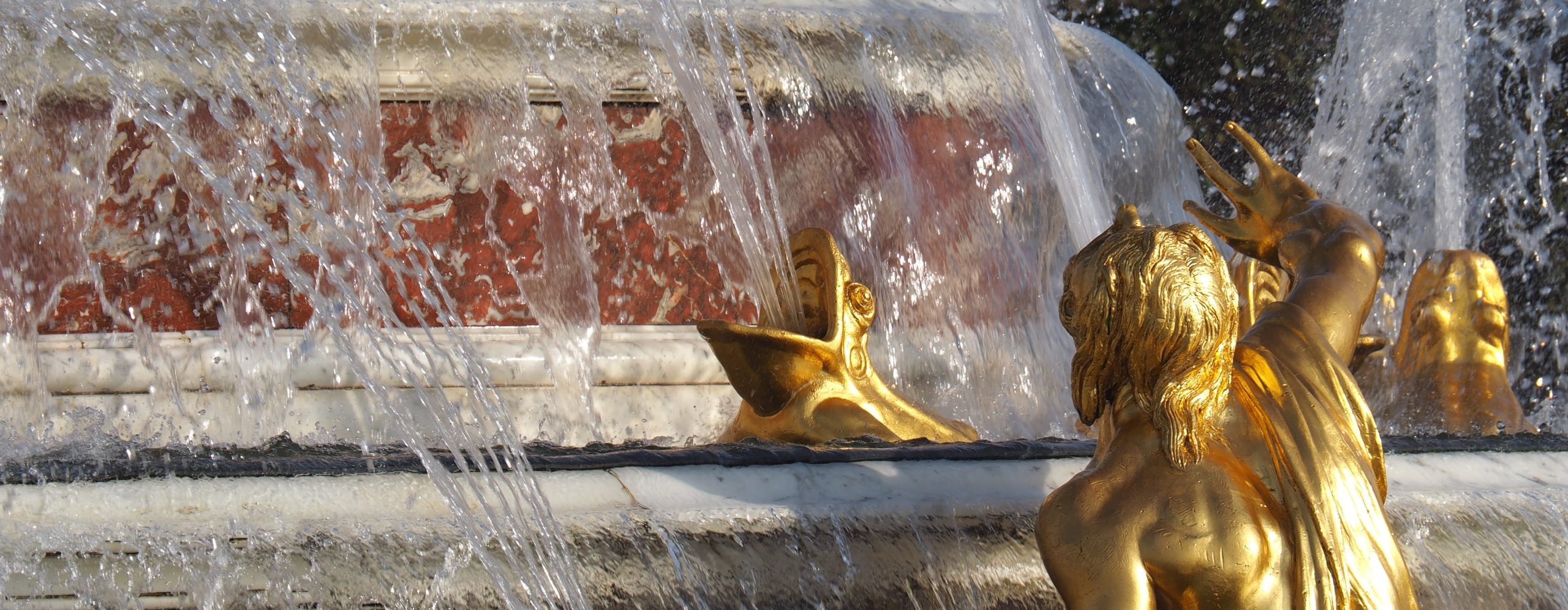
Abundant Water: Modern Comfort Accessible to All
By 1975, 97 percent of households had running water: the conquest of water was complete, and it brought about a transformation in our way of life. Published within a year of each other, Georges Vigarello's book Le Propre et le sale: L’hygiène du corps depuis le Moyen Age (The Dirty and the Clean: Bodily Hygiene since the Middles Ages, 1985) and Jean-Pierre Goubert's book La Conquête de l'eau : L'avènement de la santé à l'âge industriel (The Conquest of Water: The Advent of Health in the Industrial Age, 1986) illustrate how running water has revolutionized our hygiene habits in only a century. Behind the issue of hygiene, it is, in reality, a bourgeois vision of society that has prevailed over the declining aristocratic elite. The hygienist bourgeoisie opposed the frivolous beautifying practices of the aristocracy with the rigor of nature; they preferred the chaste and pure nudity of the body over cosmetics that enhanced only visible parts of the skin. Previously, it was believed that changing clothes was sufficient for cleanliness, but now doctors recommended washing hands, face, and body with water. However, it took time for bourgeois morality, influenced by Catholicism, to no longer associate intimate hygiene with a form of self-gratification and, instead, conceive personal cleanliness as an unprecedented moral value. In the twentieth century, dirt became the shameful mark of the working classes, who needed to be taught a new physics of the body: fresh air, physical exercise, personal hygiene, as well as the fight against moral and health deviances such as alcoholism.
This marked a complete reversal of mentality, a true revolution in which the Compagnie Générale des Eaux played a role. As researcher Dominique Lorrain explains, “In the mid-nineteenth century, water at home did not exist, neither technically nor in people's minds.” Initially, both affluent and modest populations saw no need to change their habits, which were based on modest needs. It was only under the influence of hygiene and the Anglo-Saxon elites that behaviors began to change. In the mid-nineteenth century, the average French person consumed an average of twenty liters of water per day and relied on public fountains or water carriers for their supply. In Paris, the commercialization of subscriptions was one of the main reasons why Prefect Haussmann turned to interested management: the teams of the company agreed to convince household staff to connect the homes they were responsible for to the water network and to overcome the resistant competition from water carriers. The pace of change accelerated when French elites compared themselves to their Anglo-Saxon counterparts vacationing on the French coast, for whom access to running water was synonymous with modern comfort.
The arrival of water at home was not enough, and hygiene in the household remained a luxury for a long time, as it required purchasing expensive equipment. Moreover, it required having enough space to dedicate an entire room to personal hygiene. For a large part of the nineteenth century, hygienic practices continued to take place outside the home: laundry was washed in public washhouses, bathing occurred in rivers or public baths, and drinking water was obtained from public fountains.
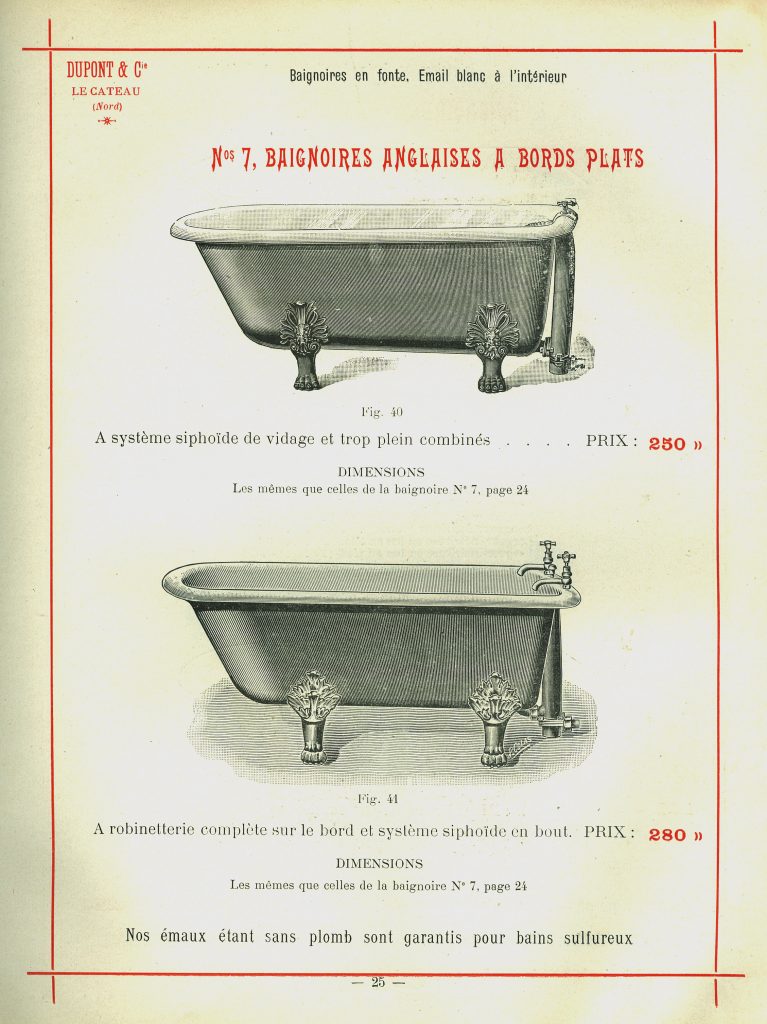
© La Pompe de Cornouailles Association
During this time, the bathtub made its appearance, but it was not fixed in place. Built on legs and not connected to plumbing, it had to be placed in a location convenient for heating water. For those who could not afford a bathtub, the English tub was imported—a sort of basin that could be moved around the dwelling and allowed for standing washing with minimal water usage, embracing the concept of frugality. Bathing scenes were immortalized by Degas in several nude pastel drawings during the 1880s. Other artists, such as painter Pierre Bonnard, made it a subject of study. In the 1920s, he drew multiple nudes of his companion, Marthe, reclining in her bathtub, combining the modern ritual of a woman enjoying time in her bath with the ancient ritual of a body embalmed in a sarcophagus to defy the passage of time.
More trivially, in 1840, the prefect of Nièvre was the only one in the entire department to have a bathtub, and a century later, in 1954, not much had changed: only one in ten households had a bathtub or a shower. However, these new fixtures—the sink, bidet, bathtub, and “water closet” (W.C.)—eventually became more accessible with the post-war economic boom. Historian Jean-Pierre Goubert notes that “gestures performed in public, particularly those related to laundry and defecation, were rejected as belonging to a bygone, even somewhat barbaric past. The landscape of housing evolved. Rooms became specialized, and uses were privatized. Modern comfort settled in, along with an entirely new way of living.” In a 2010 study entitled “Toilet and Bathroom in France at the Turn of the Century,” Monique Eleb analyzed the transformation of the toilet cabinet, which was more focused on beauty and vanity, into the bathroom, a space that “is not defined as masculine or feminine and allows men to access cleanliness in a space less symbolically feminine than the toilet cabinet.”2
The 1950s marked a real turning point. In 1951, Françoise Giroud, then the director of Elle magazine, commissioned a comprehensive study on the cleanliness of the French, but the article's title only focused on women: “Is the French Woman Clean?” The response was “no,” documented by “distressing results” that caused quite a stir even at that time. Toothbrushes, changing or not changing underwear, soap usage—everything was scrutinized. With a touch of sexism that was characteristic of the time, Françoise Giroud took the opportunity to criticize vanity, which continued to overshadow basic hygiene and prevented women from wanting to be clean—the proof being that men, being less concerned with vanity, were supposedly cleaner. A year later, Paris Match presented its ideal home. The magazine stated that “water and order are the true luxuries of modern life.” This conclusion was in line with modernist architects Auguste Perret and Le Corbusier, as they placed hygienic concerns at the center of their work: air circulation, access to water and sanitation, the need for light, space optimization, decluttering rooms, and the importance of outdoor spaces—all concepts that were brought to the forefront during the Covid crisis.
The democratization of the bathroom gradually occurred in the post-World War II era, thanks to the construction of new modern homes. Symbolically, it was not until the 1970s that the last public bathhouses built in the nineteenth century, such as the building in the Marais district in Paris (which later became a famous nightclub) or those in Pontoise (abandoned in the 1980s and converted into offices for a local newspaper in 1993), were closed. Today, municipal public showers still exist for the most disadvantaged, but to preserve the new requirement for privacy, they take the form of individual cabins.
During the postwar economic boom, the rate of households equipped with appliances also skyrocketed (from 8 percent in 1954 to 44 percent in 1967 for washing machines alone), much to the dismay of certain nostalgics, such as Louis Aragon, who denounced the United States as a “civilization of bathtubs and refrigerators,” or Boris Vian, who lamented the fact that courtship now involved offering not one's heart but “a refrigerator, a nice scooter, an atomizer, and Dunlopillo bedding.” With these modern appliances, from washing machines to dishwashers, which operated on cheaper and more efficient energy, women did not achieve equality in the division of household chores but did gain time in their daily lives—a small step toward emancipation. Guy Burette, President of the Vexin Normand Water Union, recalls his childhood in Buchy, Seine-Maritime: “I still remember my mother filling a large pot with water to do the laundry; it took so much time! It used to take more than a day to do what now takes two or three hours because we had to boil the water to make it whiter, soak, dry, iron... People have forgotten all that.” Thus, the average water consumption per person gradually multiplied by ten, from twenty to two hundred liters per day. This was the era of abundance.
The widespread access to clean water had consequences beyond the home. Although the idea of combating alcoholism at school may seem surprising today, it should be recalled that it was in the same decade, 1956, that a circular issued by Pierre Mendès-France put an end to the presence of alcohol in school cafeterias for children under fourteen! In line with the nineteenth century—when even Pasteur himself wrote in 1866 that “wine is the most hygienic of beverages”—there was still so much mistrust of available water that people primarily consumed wine at the table (and midwives sometimes performed deliveries without necessarily washing their hands). It was the distribution of an adequate quantity and quality of drinking water that brought about this transformation of our behavior toward a form of sobriety.
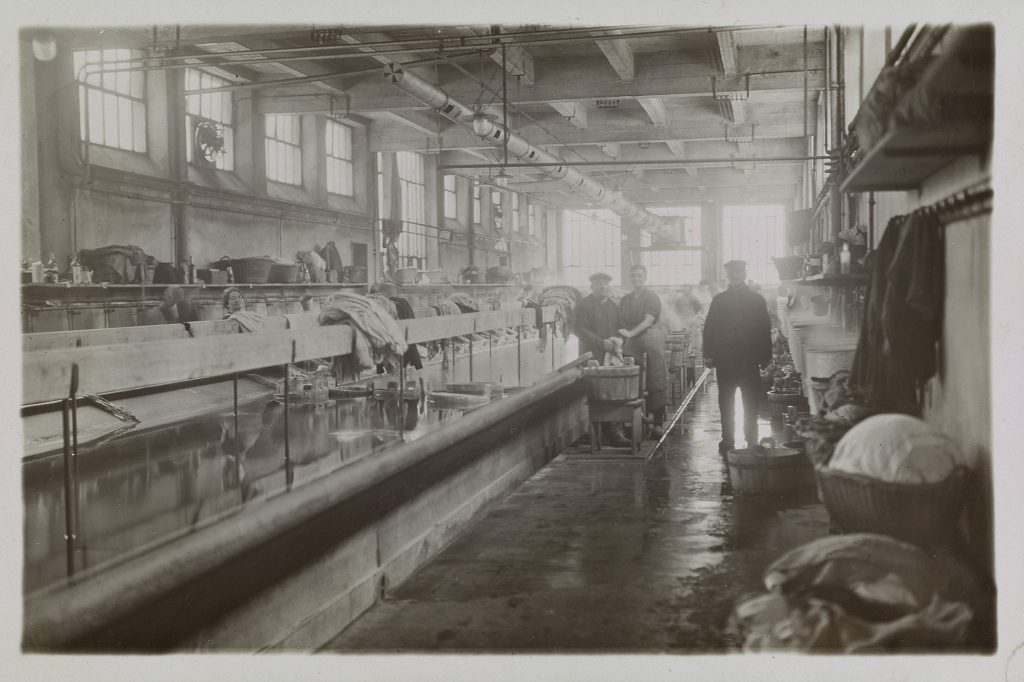
© Veolia Archives
The influence of the Compagnie Générale des Eaux and the entire water supply sector along with it extended far beyond providing a mere convenience. It contributed to redefining the modern relationship with both the interior and the exterior. As sociologist Clément Rivière states, since 1945, “the uses of public spaces have undergone profound transformations: with water and electricity supply networks, the advent of refrigerators, washing machines, and televisions, it became possible and enjoyable to spend more time at home. There was no longer any need to go to the public square to wash one's laundry, for example.”3 Long before the emergence of smartphones or the quest to optimize time, the increasing presence of cars in cities, or the evolving norms of good parenting, water helped to shape our children into “indoor children,” to borrow a phrase from Dutch geographers Lia Karsten and Willem van Vliet. Some now call for a reversal of this trend to reclaim the outdoors—making urban spaces more welcoming and safe, connecting green spaces, rethinking intersections, managing car traffic, and prioritizing pedestrians. According to sociologist Thierry Paquot, “an entire culture of civil engineering needs to be rethought!"4
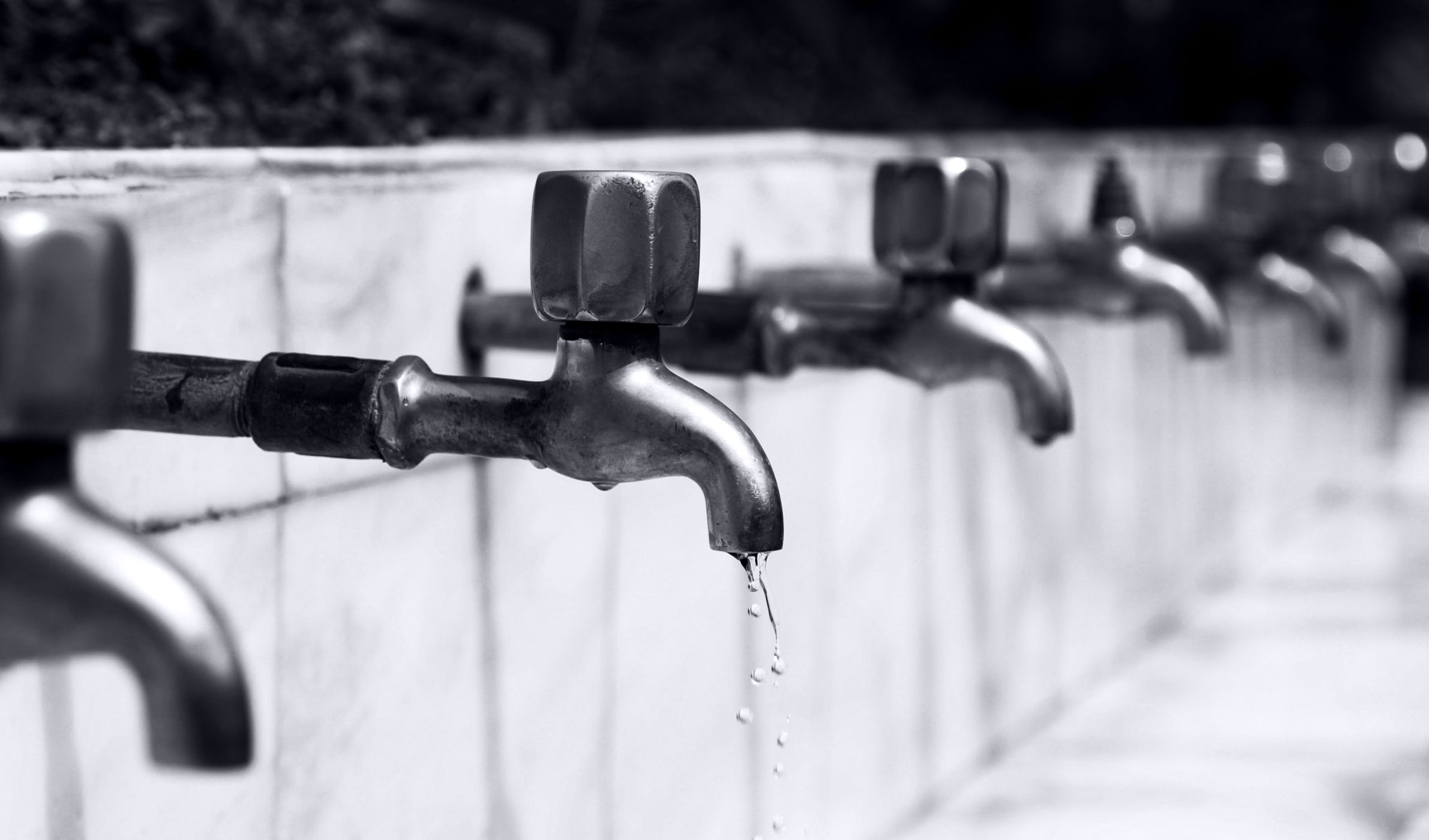
From Invisible Water to Rare Water
Despite its major consequences for our way of life, it is clear that society as a whole seems to have amnesia when it comes to water: whether it is simply about its source (who knows where the water they drink comes from?), its price (who knows the amount of their water bill?), or its quality (who can say what the water flowing from their tap is composed of and what standards define its potability?). While water used to be tangible, organic, and foundational, our relationship with water has evolved in a few decades to a high level of abstraction that “invisibilizes” both the water network (pipes, pumps, and treatment plants) and the territory it manages.
Even the names of French departments, almost all of which are named after a river or stream, are now only described by their number in common language, a sign of a new attachment that is more administrative than geographical. By hiding water, by treating it far from home (upstream or downstream), we have domesticated it. But in the process, we have made the awareness of its fragility less acute. Today, there are many points of ignorance among the general public regarding water management. This can be seen by reading the national water barometer published every year for the past twenty-six years by the Water Information Center (CIEAU). In 2022, for example, 77 percent of people believe that water is drinkable in its natural state. The real function of wastewater treatment is known by less than a third of French people, and two-thirds of French people are unaware of the price of a cubic meter of water. Many of them feel that they spend more on water than on the internet and telephone when, in reality, water is two to three times cheaper.
This lack of knowledge has been particularly supported by CNRS researcher Agathe Euzen who in 2007 studied perceptions regarding water quality and health risks. She found that the definition of good water evolves with time and sensibilities, but also that ignorance of health standards leads to risky or at least paradoxical behaviors. For example, one condominium refused to change lead pipes because it downplayed the risk involved while “disengaging from any responsibility by adopting individual alternative solutions using filtering pitchers.” Similarly, Parisians, who were the subject of her study, rarely make the connection between limestone and calcium, even though the former contains the latter. One interviewed user said, “In tap water, there is limestone; it is less rich than mineral water.” However, this limestone is composed of calcium carbonate, exactly like some mineral waters, which could also cause scale buildup in household appliances if they were used in kettles or washing machines. From limestone to calcium, there is only a lexical step that consumers dare not take, convinced that one is harmful while the other is beneficial.
It was in the 1990s that consumers began to gather in associations and the media started to take an interest in issues such as water quality or network efficiency (and therefore leaks). The French portmanteau consom'acteur (consumer-actor) appeared to describe the committed forms of consumption that result from ecological awareness.
Géraldine Sénemaud, consumer director of the Water France activity at Veolia, says that, as a result of individualized behaviors and increased consumer demands, customer relations have become paramount in the ecosystem of water distributors. “For a long time, the only contact between the user and the distributor took place when they subscribed and terminated their contract, or when a billing problem arose. Today, the customer does not have a relationship of simple convenience with water; they are aware that it needs to be protected.”

On the customer relations front, the relationship with the user now passes through a permanent link, via call centers modeled on those set up by telecommunications operators in the 1990s. “It has become a know-how,” says Sénemaud. “The customer experience has become paramount.” Water distributors now assert themselves as a local service, with small local agencies in the hearts of cities and permanent offices on market days—and the teams responsible for consumers regain the central role they originally had when it came to contracting the first subscriptions.
On the water quality front, to meet the demand of dissatisfied consumers who see their pipes or domestic appliances damaged, Veolia's expertise, for example, was solicited in the Normandy Vexin to build water decarbonation plants and reduce the limestone content. “These are big investments,” explains Guy Burette, “but it also allows us to protect the groundwater, because limestone encourages people to use more detergent and softeners, which pollute downstream.”
On the equity front, the implementation of the Brottes law in France in 2013 accelerated the deployment of the solidarity water voucher and, more broadly, social tariffing—in addition to ongoing efforts to raise awareness about tap water use, especially among disadvantaged populations who, coming from countries where water is not drinkable, may still prefer to buy bottled water, even for hygiene or cooking purposes, at the expense of their purchasing power.
Finally, on the consumption control front, new personalized services are emerging, based on the introduction of remote meter reading in the early 2000s, well before it was deployed for energy. These new meters allow for almost perfect transparency with the consumer, as well as for real-time billing, capable of alerting the user to their consumption or potential leaks. In 2022, for example, consumers were informed of more than seventy thousand leaks, saving 4.2 million cubic meters of water (equivalent to 1,700 Olympic-sized swimming pools). Xavier Mathieu, CEO of Birdz, a Veolia subsidiary specializing in the digitalization of water professions, believes that data science will make cities smarter, in France and around the world. “Soon, we will even be able to predict tomorrow's consumption volumes or analyze population flows, as water consumption is the best indicator of presence in a territory,” he says. “This information has real value for waste collection. For example, we will be able to determine whether additional trucks need to be dispatched based on the situation.”
As has long been the case, Veolia is developing new services to meet emerging needs—services whose usage is gaining importance over time, with new needs being added to the initial ones: remote reading, initially invented to meet the needs of individualization, shows its usefulness in an era of water scarcity.
Because the era of water scarcity is now: since the late 2010s, episodes of drought and climate disasters have changed mentalities much faster than years of scientific education, and more and more people in France and elsewhere are realizing that water is scarce. As seen in California for several years, customers are now hunting for water waste. They question the irrigation of crops during heatwaves, swimming pool water, golf course irrigation, and the artificial snow at ski resorts. Sandrine Motte, director of Eaux de Marseille, sees attitudes changing in the city: “Just five years ago, the street cleaners would open the hydrants to clean the sidewalks in the middle of summer, letting the water flow into the gutters,” she says. “Today, these hydrants are closed. And when people see practices like street pooling—opening fire hydrants to cool off during heat waves—they send us indignant messages on social media. These are ways of doing things that are no longer acceptable.”
Concern about water shortage among the French population has jumped from 32 percent in 19965 to 81 percent in 20236, an increase of nearly fifty points. More broadly, 71 percent of the world's inhabitants feel exposed to risks related to climate change or pollution, and 60 percent are willing to accept most of the changes (economic, cultural, and social) that will come with the massive deployment of ecological solutions7.
The current movement therefore reflects a strong desire in response to a heightened awareness. Spain has taken a lead in water conservation: in Barcelona, for example, consumption decreased by an additional 20 percent after the intense drought of 2000. As in the rest of Spain, average consumption now stands at one hundred liters per day per person, 20 percent less than in France.
The current evolution goes beyond the initial movements of optimization and performance initiated since the 1990s. Indeed, since that decade, network efficiency has increased to reach 80 percent in France, and private consumption has decreased by 30 percent due to remote reading, awareness campaigns, and, importantly, the reduced consumption of household appliances, from dual-flush toilets to energy-efficient washing machines.
In all cases, rather than an approach centered on the individual, sobriety is best integrated into a comprehensive territorial approach, adapted to the specificities of the resource and its local uses. This is the approach that the European metropolis of Lille has taken by committing to the most ambitious sobriety contract in Europe at a time when water scarcity is now hindering its industrial development. This will involve removing degressivity (the progressive reduction of payments above a certain level) for major consumers, distributing hydro-efficient kits, and tracking and repairing diffuse leaks under sidewalks and roads. And, importantly, Veolia will incur penalties if it sells more water than planned.
Other models may exist, such as the use of incentive pricing for consumers or the development of more decentralized systems, including rainwater harvesting or the recycling of wastewater for toilets and gardens. These perspectives raise a wide range of questions: if exiting the network seems to be reserved for only a small fraction of the population, what is the optimal balance between autonomy and the network, between an individualistic model and a solidarity model where everyone contributes equitably to the maintenance of a service accessible to all? According to researcher Jérôme Denis, the idea of completely leaving the networks is mostly a myth. “We believe in a return to ancient practices, as if we had experienced a mere consumerist parenthesis, with the constant renewal of objects and the formation of networks. With this thinking, which produces an individualizing relationship between objects and people, one can fall into a survivalist fantasy. However, when we delve into the field of maintenance, we understand that all of this is so costly that we need others: it is interdependence that governs our way of life.”
Water for All in Guayaquil
Veolia's commitment to the effective right to water is evident in all the geographic areas where the group operates. In Guayaquil, the largest city in Ecuador, access to water has increased by 60 percent in ten years, reaching a rate comparable to that recorded in the most advanced countries: 97 percent of the population has daily access to safe drinking water.
To achieve this, beyond the deployment and maintenance of infrastructure, the development program has implemented a social tariff for the most disadvantaged neighborhoods. It is a debt relief program managed in collaboration with the government and local citizen associations, with a mediation process to address user complaints and propose fair payment solutions adapted to each family’s conditions.
As part of this program, Veolia's teams rely on a network of over one thousand community leaders to assist residents in disadvantaged neighborhoods. Four mobile agencies travel across the city to interact with residents and establish a close relationship with public services. Finally, Veolia conducts awareness campaigns each year, which promote responsible consumption, the price of water services, and resource preservation.
In Tangier with Esther Duflo, Nobel Laureate in Economics
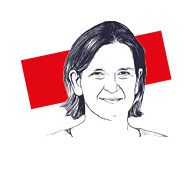
Esther Duflo, Nobel laureate in economics in 2019, holds the Poverty and Public Policy Chair at the Collège de France. During her inaugural lecture, she shared the results of her collaboration with the Moroccan government and Veolia to ensure the effective right to water. This demonstrates the need to align major policy directions, procedural establishment, and the attention to detail that lies at the core of her work. She also highlights the crucial role of Veolia's teams alongside the residents:
“Economic policy issues often involve a significant plumbing component. [...] A project in Morocco, directly related to plumbing, illustrates the gains from collaboration [between policymakers, engineers, and detail-oriented economists]. The Moroccan government aimed to provide water access to the poorest households. To achieve this, they had designed their program in broad outlines: companies wishing to operate water and sanitation networks in major cities had to commit to carrying out the necessary work to ensure access for poor households.
“Veolia, which had won the tender for Tangier, completed major construction projects to bring water and sanitation to the narrow streets of the old city center. They also devised a free access subscription: the cost of individual connections was included in a zero-interest loan, repaid monthly along with the water bill. Everything was in place: the political will, the work of civil engineers, and the financial arrangement. But the customers did not come! The demand for connections was very low. It was at this point that I met Olivier Gilbert from Veolia. He was interested in this enigma, and I was interested in the potential impact of access to safe drinking water on the lives and health of residents. We started working together.
“The Veolia team had ideas about the barriers preventing households from applying for connections: conflicts between property owners and tenants, lack of funds, conflicts within extended families. But as we walked around the city and interviewed residents, we discovered another barrier: the application process, as is often the case for government programs worldwide, was complicated. Every connection applicant had to appear in person at an administrative center, quite far from their homes, with a pile of documents; if any document was missing, they had to come back. The procedure was too complex, and most residents had simply given up.
“This type of obstacle course for obtaining a right [...] is sometimes intentional. Imposing obstacles is a way to ensure that only those who truly need a service (or assistance) are willing to go through the process, implicitly targeting the intended beneficiaries. But most often, it is simply the byproduct of excessive surveillance efforts and officials' mistrust of their constituents. New layers of documentation and verifications are piled on top of old layers, without ever removing any.
“In the case of Tangier, the complexity of the procedure was not entirely intentional. When we proposed sending a team to visit residents at home and photograph their documents there, thus saving them multiple trips, Veolia and the government agreed. We designed an experiment where every other resident received a home visit to offer them a connection. The demand exploded, from less than 10 percent to 69 percent. The connection allowed families to free up considerable time, resulting in improved mental health and well-being and a reduction in family tensions. All of this required only a small additional expense, which made the infrastructure effort profitable.”
- Goubert, Jean-Pierre and Le Roy Ladurie, Emmanuel, La Conquête de l’eau : L’avènement de la santé à l’âge industriel [The Conquest of Water: The Advent of Health in the Industrial Age], (Paris: Hachette, 1986). ↩︎
- Monique Eleb, “La mise au propre en architecture : Toilette et salle de bains en France au tournant du siècle (1880–1914),” in Techniques & Culture [online], 13 | 1990, published online January 16, 2006. ↩︎
- Rivière, Clément, (interview by Clara Georges), “Où sont passés les enfants des villes ? ” in Le Monde, July 14, 2022. ↩︎
- Paquot, Thierry, (interview by Clara Georges), “Où sont passés les enfants des villes ? ” in Le Monde, July 14, 2022. ↩︎
- Water Information Center (1996). « Les Français et l’eau ». ↩︎
- Elabe, Les Echos and Institut Montaigne (2023). « Les Français, l’eau et la sécheresse ». ↩︎
- Elabe and Veolia (2022). Ecological Transformation Barometer. ↩︎
